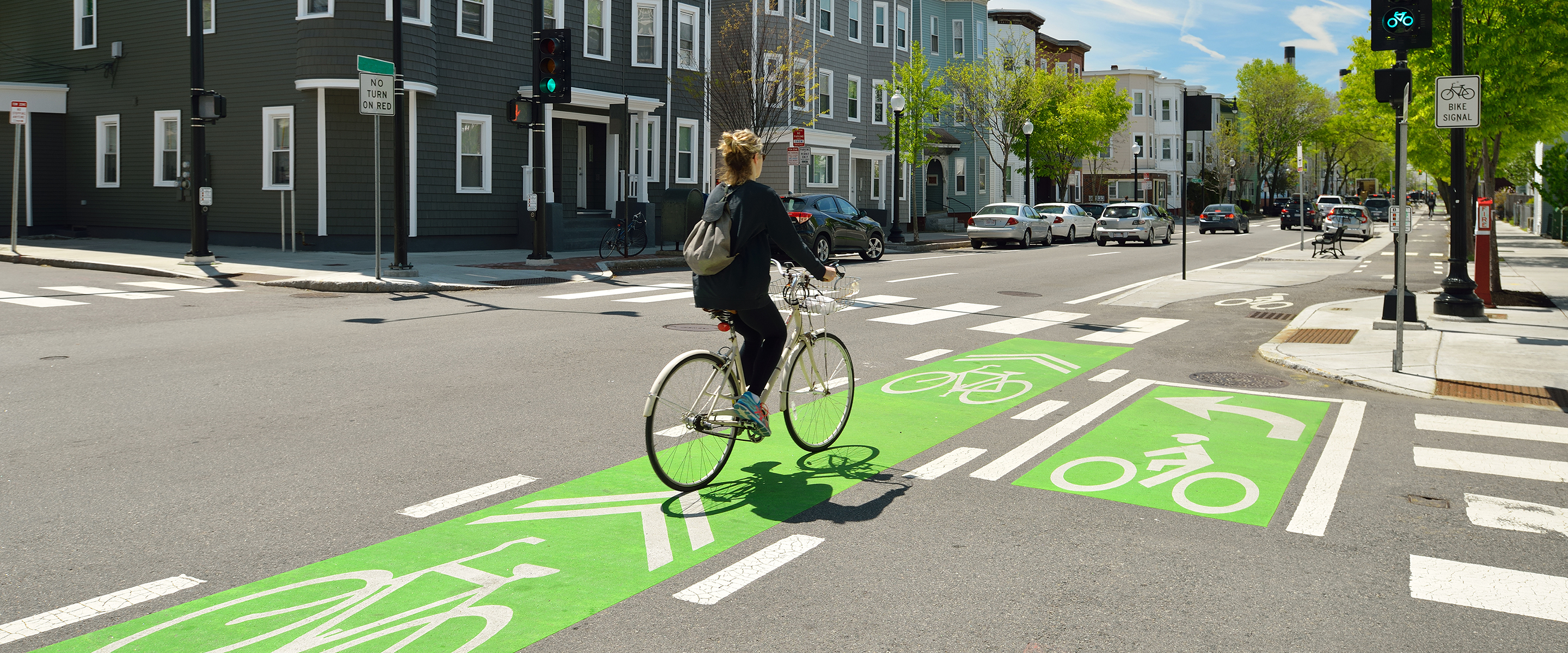
March 2024
Helping Enhance Street Safety through Visibility and Skid Resistance: The Case for MMAX® Area Markings
Updated Methyl Methacrylate (MMA) Offerings Provide Big Benefits for Bicyclists, Pedestrians, Motorists
The use of bicycles as a means of transportation in municipalities small and large continues to gain popularity. Multiple studies conducted during and after the COVID-19 global pandemic saw a surge in such activity as riders took advantage of virtually empty streets. That same research suggests that the move toward two wheels as a means of commuting has staying power if cities are prepared to invest in the infrastructure to support it. Many cities are currently exploring ways to enhance safety and deliver lasting quality for bicyclists, pedestrians, and motorists alike.
Accomplishing that mission means tapping into the latest advancements for bike lane construction and maintenance. A dedicated bike lane in a metropolitan setting occupies its own real estate, yet it must also be fully integrated into the city’s general streetscape so that bicycles, cars, and people crossing the street can coexist harmoniously.
With this in mind, consider the complexity of coating applications for bike lanes when it comes to visibility and skid resistance. Add to this the concerns any municipality faces once it has committed to upgrading its bike lanes. How long will it take to apply the proper coating for that bike lane? How will that coating respond to extreme weather conditions, especially in cities where the heat is a factor for a significant portion of the year?
Traditional MMA product applications for bike lanes can last 10 years but may experience color fade and degradation in that time. As a result, cities across the nation are looking for a more resilient alternative. The ideal solution: A product that has high visibility; can withstand heavy traffic; and can provide enhanced grip for bicyclists, pedestrians, and motorists.
Street surface temperature is among one of the top challenges for such coating applications when it comes time to install a lane. The extreme heat remains one of the most common reasons for faulty application and performance of pavement coating. With pavement temperatures reaching upward of 150 degrees Fahrenheit in the mid-summer day, surfaces can be simply too hot to apply traditional MMA coatings. These extreme conditions can force crews to postpone work or wait for the surface temperature to decrease before resuming the job.
When it came time for four distinct municipalities in California to invest in new pavement markings for their bike lanes, each one turned to ENNIS-FLINT® by PPG MMAX® Extended Season area markings to provide a high-visibility, skid-resistant coating that would accommodate the warm climates and high-traffic areas.
Uniquely designed to accommodate extreme heat, ENNIS-FLINT® by PPG MMAX area markings can be applied on surfaces as cold as 35°F up to as hot as 150°F, increasing crew productivity. Faster turnaround time year-round allows roadways to open back to traffic more quickly.
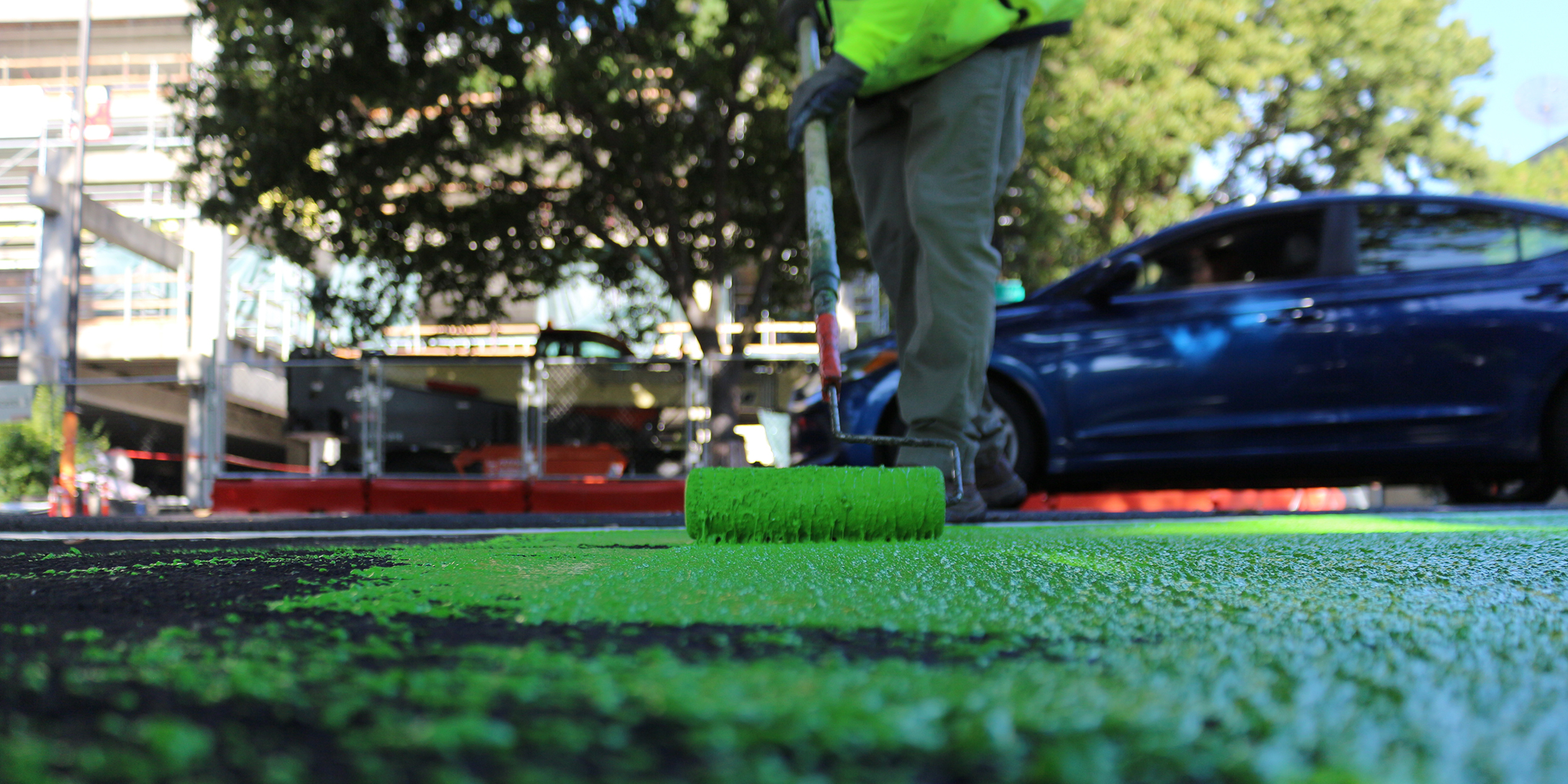
Sacramento
Beyond being California’s capital, Sacramento is also known for scorching summers. In the summer of 2023, the thermometer reached at least 100°F on 23 days. Eleven of those 23 days had a high of at least 105°F, and the temperature hit 109°F on three of those days.
When the city embarked upon the next phase of its bike infrastructure investment, it opted for ENNIS-FLINT® by PPG MMAX area markings. Asphalt road temperatures reached 135°F during MMAX Extended Season area markings application, despite air temperatures in the mid 80°F, and the roads were open to traffic on average within 15 minutes after application.
In 2023, the city had more than 10 separate, active bicycle transportation projects. Among these was the Central City Mobility project, which allocated more than 60 blocks of parking-protected bikeways. This gold standard for bicyclist safety uses posts, parked cars, planters, curbs and other items to separate bicycle riders and motorists on the same road.
City planners found that MMAX Extended Season area markings can accommodate higher application temperatures which is beneficial for year-round expansion of bike infrastructure. And because the product contains methyl methacrylate resins, a hard-wearing aggregate, and colorfast pigments, the coated road surfaces will retain its high visibility and skid-resistant properties for up to a decade.
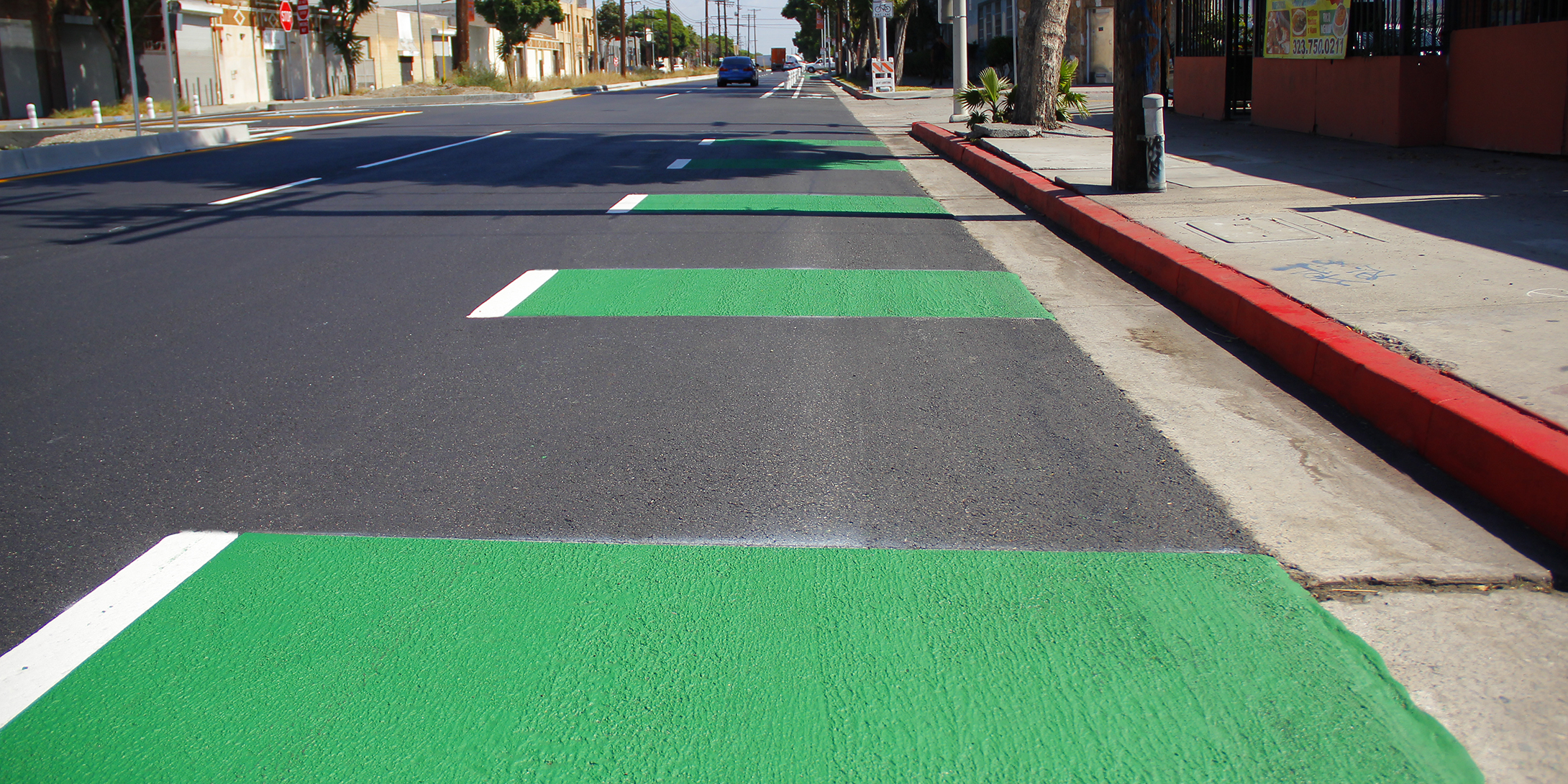
Los Angeles
Los Angeles, CA, is known for dense and congested traffic, which means road safety for pedestrians and motorists is a top priority. In fact, the city of Los Angeles is under scrutiny to ease traffic congestion and encourage more sustainable methods of transportation.
With a growing, robust bike culture, Los Angeles has committed to the expansion of bike lanes and dedicated paths to improve safety for those in the community.
For bike lane applications, Los Angeles specified ENNIS-FLINT by PPG MMAX Extended Season area markings for application on approximately one mile of bike lanes in the southern region of the city. The application took place in the fall of 2023 and used a combination of PreMark® preformed thermoplastic for the white bike symbols on top of green-colored MMAX Extended Season area markings after curing. Roads were opening back up to traffic within 45 to 60 minutes after application.
The City of Angels is also considered by many to be the entertainment capital of the world. This means city planners needed to consider how the color of the bike lanes being installed could impact film makers. For this reason, Los Angeles specified MMAX Extended Season area markings in a darker shade of green than what is typically used in bike lanes. The traditional color would have interfered with filming efforts. The darker shade, named Hollywood Green, is a friendlier shade for camera lenses.
“The City of Los Angeles has made it a priority to keep both pedestrians and bicyclists safer at a time when more and more people are choosing two wheels for their commutes. LA’s selection of Extended Season MMAX area markings is an investment that will pay a host of dividends,” said Maria Wang, PPG director, product management – liquid coatings, Traffic Solutions. “Because it can be applied on a quick timeline and when the thermometer is running high, this product is a great fit for municipalities in warmer climates, including Los Angeles.”
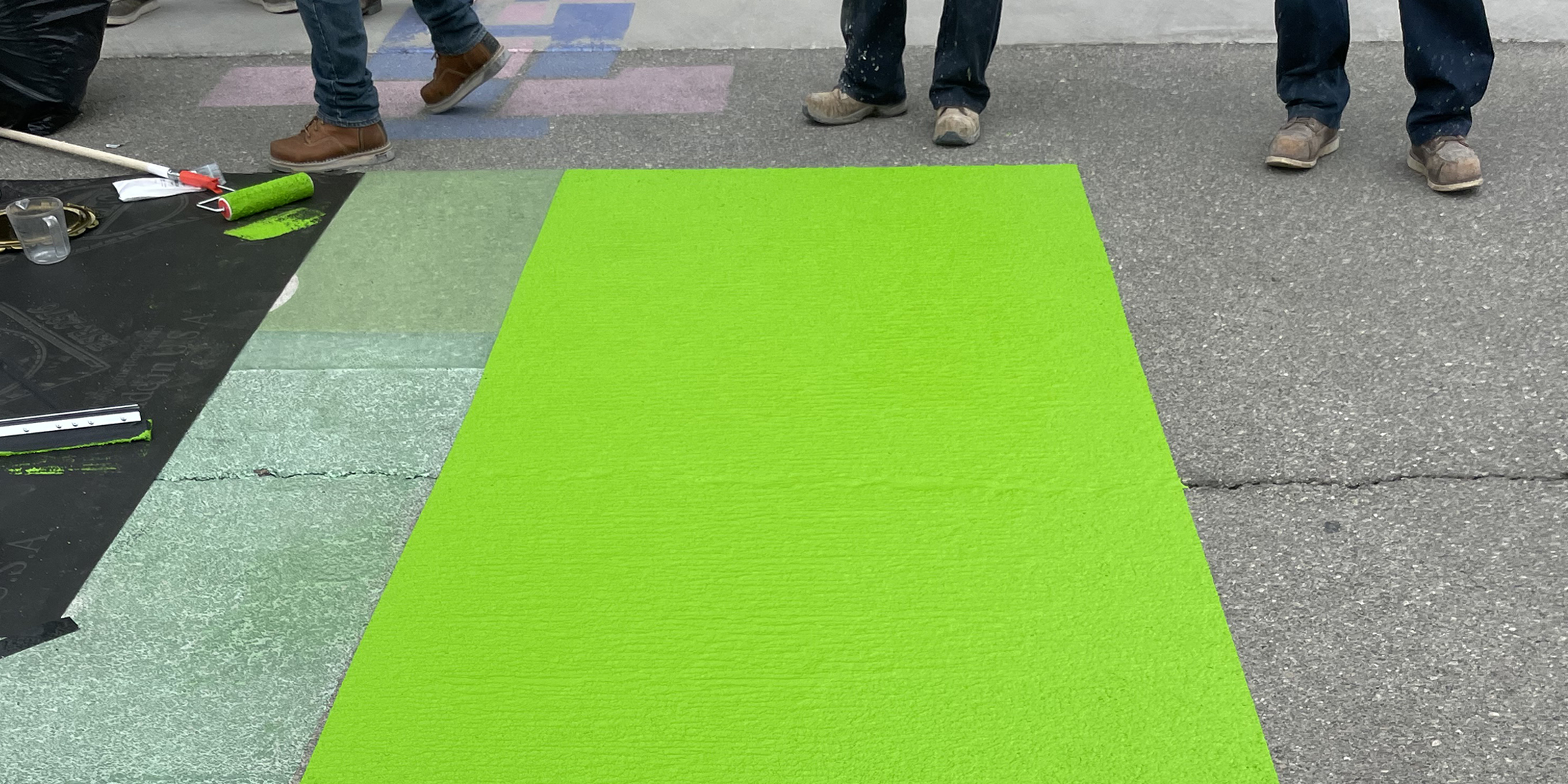
La Quinta
The city of La Quinta is situated in California’s Coachella Valley, an arid, dry climate. La Quinta is known for its desert landscaping and outdoor recreation, including a growing interest in recreational and transportation biking.
For bike lane applications in this dry climate, the city of La Quinta required a pavement solution that could be applied in extremely hot temperatures. La Quinta specified ENNIS-FLINT by PPG MMAX Extended Season area markings to fit their needs. The demo application took place in the City Yard and withstood a pavement temperature of 125°F. In total, installation crews applied green-colored MMAX Extended Season area markings to more than 10,000 square feet of bike lanes.
“Our ongoing commitment to innovation in traffic solutions is serving as a blueprint for infrastructure improvements for other cities across the nation with a similar environment,” noted Wang. “The ability to apply this product at higher temperatures benefits project timelines while delivering a long-lasting result.”
MMAX Extended Season area markings can be applied to pavement surfaces as hot as 150°F (66°C) and with the triple working time of other products on surfaces at 110°F (43°C) or more, making this application well-suited for La Quinta’s desert climate.
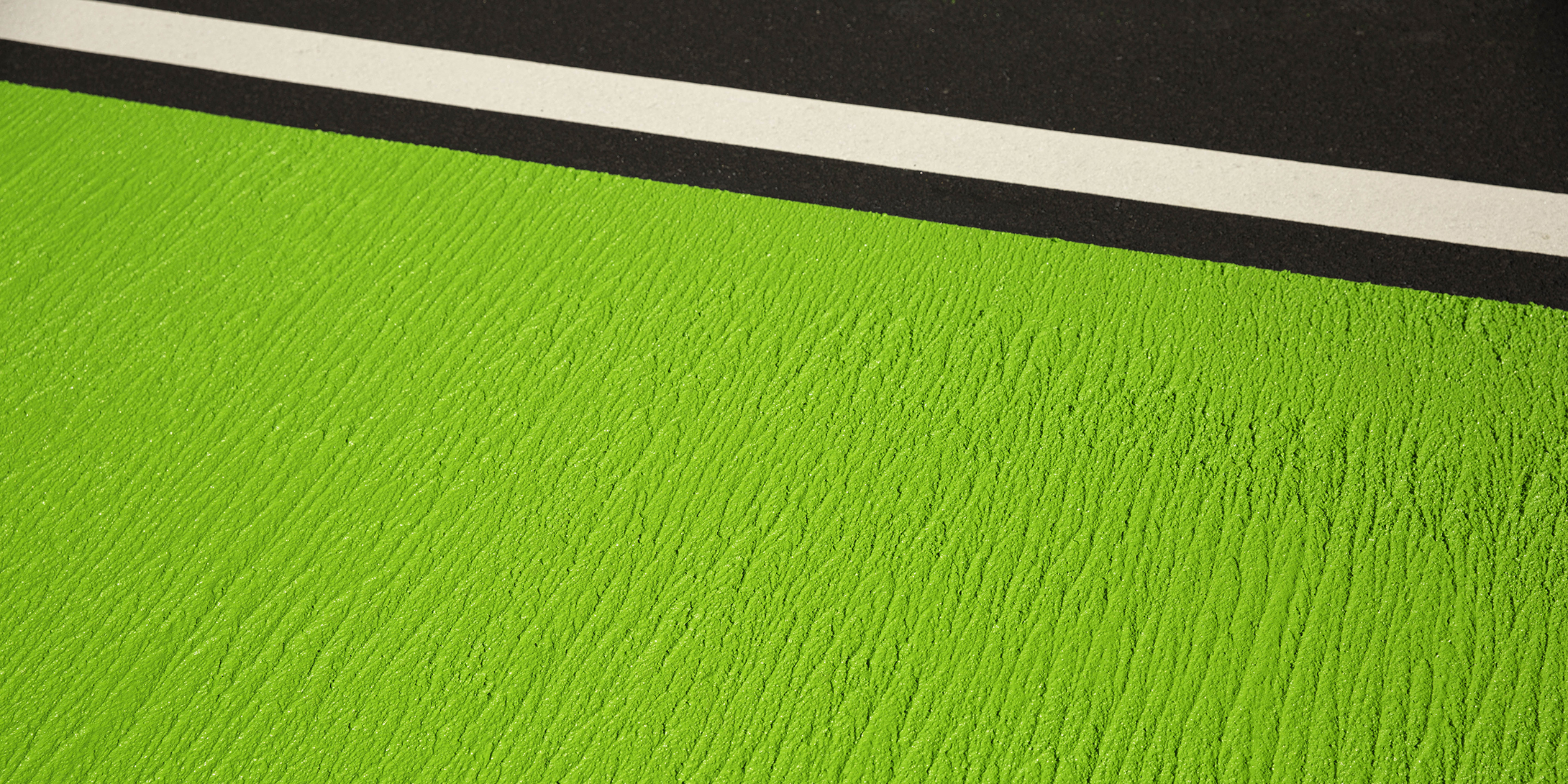
Santa Ana
With beautiful scenery and ideal weather, Orange County is one of California’s top communities for bicyclists. With numerous trails and more than 1,000 bike lanes, Santa Ana is a community that focuses plenty of attention on bike safety. And investments in infrastructure to support that safety continue to grow.
When upgrading bike lanes in Santa Ana, the city specified ENNIS-FLINT by PPG MMAX Extended Season area markings for green-colored bike lanes on Santa Clara Boulevard. The application took place in August 2023 and withstood pavement temperatures of up to 115°F.
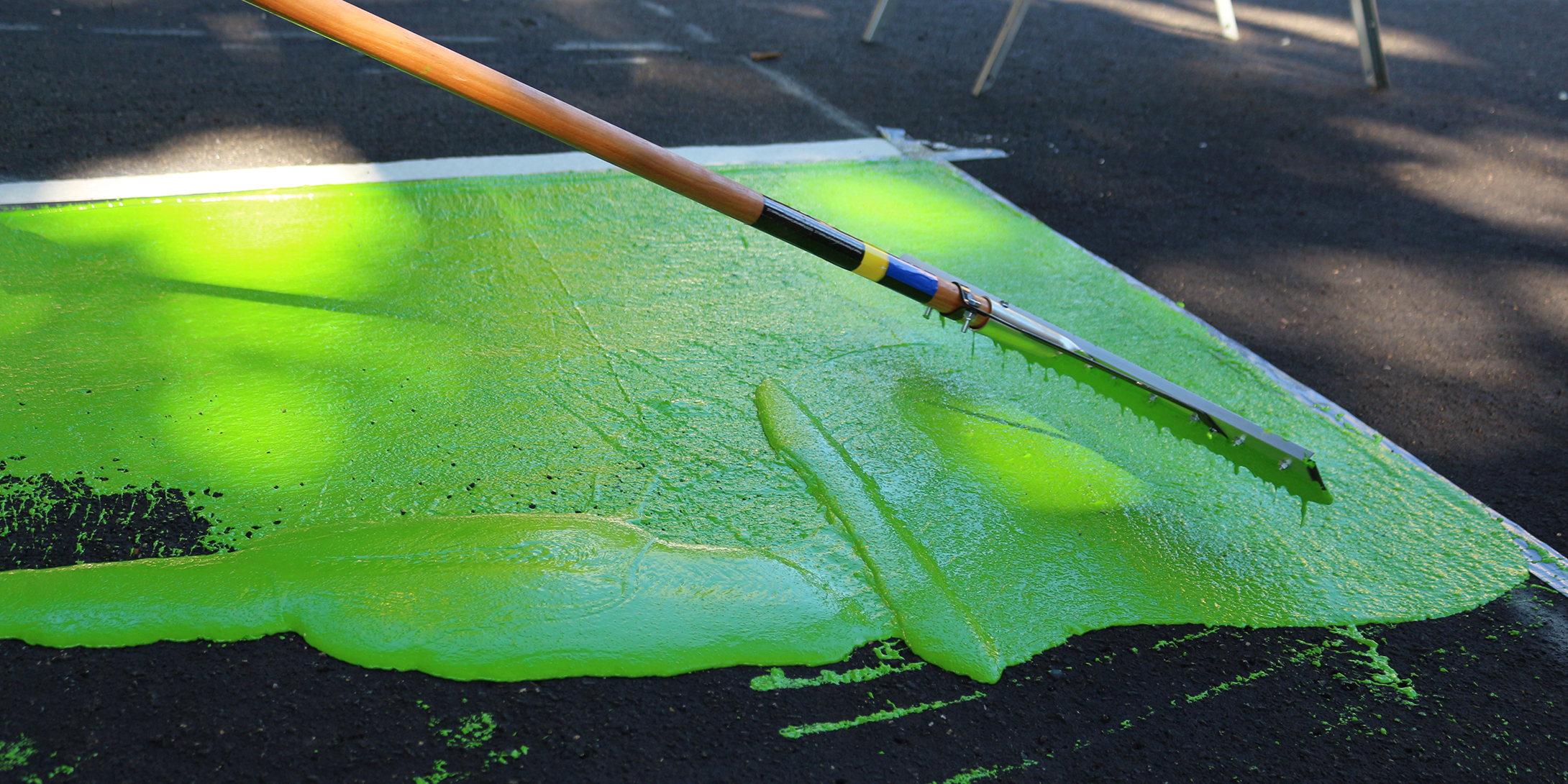
Setting a New Standard
For cities that seek to install or enhance bike lanes, selecting the right product for road coating applications depends on a variety of factors. Among the top considerations are high visibility, skid resistance, ease of application, and minimal wear and tear.
Available in eight standard colors, ENNIS-FLINT® by PPG MMAX® Extended Season area markings designates bike lanes, bus lanes, parklets and more. Whether the application is utilized in low- or high-traffic zones, ENNIS-FLINT by PPG MMAX area markings meet nonslip requirements for cyclists while enhancing visibility for all road users.
Fitting the mold for a wide variety of climates, ENNIS-FLINT® by PPG MMAX® Extended Season area markings can be applied in a wide range of temperatures and climates to accommodate project timelines. MMAX Extended Season area markings have the widest application temperature range in the market – from 35°F up to 150°F, which is important especially in the summer since an asphalt road gets as hot as 135°F even at air temperatures in the mid-80s. Applicators no longer need to worry about whether it is too hot or too cold for their project – the same product can be used for year-round productivity. Roads can reopen to traffic in as little as 20 to 60 minutes after application, allowing for desirable turnaround time in high-traffic zones.
The end result: Minimized interruption to traffic; a durable bike lane engineered for visibility and skid resistance; and forward-thinking investment in infrastructure that is poised to pay dividends for years to come.